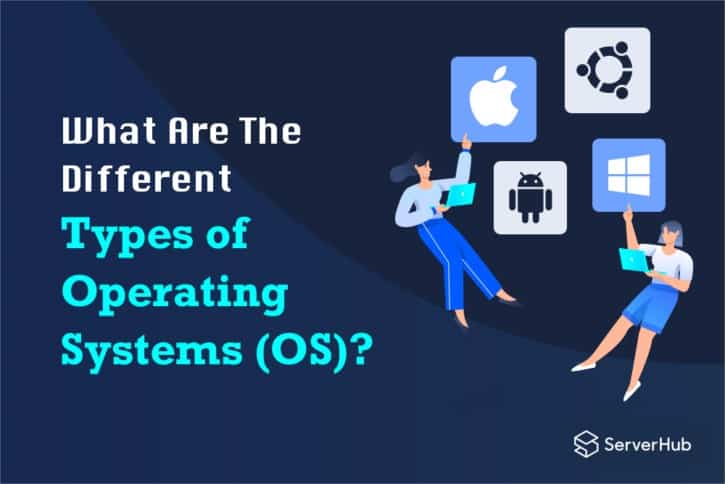In this article, we will go through the different types of Operating Systems (OS).
As you all know, an Operating System (OS) is a software that manages a computer’s memory, hardware, software, processes and functions as an interface that can be used to access and use other software on the computer’s system.
Therefore, the operating system serves as an interface between the user and a computer. This interface has different types that work differently from each other.
Types of Operating Systems
Below is a list of different types of Operating System. If you read further, we will go through each one and how it works:-
- Batch Operating System
- Multi-Tasking Operating System
- Distributed Operating System
- Network Operating System
- Mobile OS
Batch Operating System
Batch Operating Systems do not serve as a direct intermediary between the CPU and the Jobs.
Instead, there is an operator in the middle whose responsibility is to sort jobs and group the ones with similar properties and requirements into batches.
Because of the way they function, Batch Operating Systems have the ability to work through big volumes of data quickly, which is why they are most commonly used in Bank Systems, Financial Institutions, etc.
Even though they can be costly, Batch Operating Systems have many Advantages:-
- Time Management: Batch OS Processors can tell you exactly how much a job will be in queue.
- Ease of Use: It is easy to manage high volumes of work with Batch OS.
- Multi-User System: Batch OS can be shared by multiple-users.
Multi-Tasking Operating System
Also known as Time-Sharing OS, Multi-Tasking Operating Systems function by giving each single task a specific time-frame during which it should be executed. That time-frame is called Quantum.
After the quantum ends, the Multi-Tasking Operating System moves on to the next task with its own time-frame.
Though Multi-Tasking OS has a few data communication setbacks, it has very clear Advantages:-
- Fair Time-Distribution: Each Job gets a fair amount of time to be executed.
- Minimal Idle Time: Due to the queue, Idle Time is reduced to a minimum.
- Multi-Task Handling: Like the name suggests, Multi-Tasking OSs have the ability to handle multiple tasks in a clear guided time.
Distributed Operating System
This is considered to be the newest and most up-and-coming type of Operating System. A Distributed Operating System uses resources from multiple different processors in different machines to increase the computing power and speed to its users.
The way this works is that many connected computers communicate with each other through a shared network distributing their processing power to each other through the Distributed Operating System.
Though sometimes, failure of the main system can cause incredible damage to all the users of the Distributed OS, it has many strong Advantages:-
- Redundancy: Failure of one network will not affect the main network.
- Fast Communication: All communication between the devices in the network is incredibly fast.
- High Scalability: Distributed OSs are highly scalable and the further they scale the stronger processing power they have.
Network Operating System
Network Operating System runs on a server. It has many functions such as the ability to manage users, data, security, applications, and other different networking functions.
It also allows the shared access to files, folders, and external hardware such as printers.
Examples of Network Operating Systems include: Linux, Microsoft Windows Server, and Mac OS X.
Network Operating Systems have many Advantages:-
- Stability: Servers are usually centralized and stable.
- Scalability: Most servers are scalable and can be easily upgraded.
- Security: It is one of the most secure OSs as security is handled through the server.
- Accessibility: Can be accessed remotely from anywhere at all times, specially through Remote Access VPNs.
P.S: If you are planning to host a Network Operating System, make sure to take a look at ServerHub’s esteemed Globally recognized Dedicated Server solutions as well as VPCs.
Mobile OS
Mobile Operating Systems are OSs created specifically as GUIs to power smartphones, pads, tablets, etc..
The most commonly known ones are iOS for Apple iPhones and Android for Samsung, Nokia, and others.
Conclusion
There are more types of Operating Systems that are more complex and less commonly used, however, the ones listed above are the ones most commonly known and used.
If you are interested to know more, make sure to read our more detailed article about Operating Systems as well as some other that may interest you:-
- How To Install a FiveM Server on Windows
- How to Download and Install an OS using IPMI
- What’s The Difference Between Remote VPN & Site-to-Site VPN?
